Brake Caliper Replacement Without B9Q/V4U
Removal Procedure
Notice: Use the correct fastener in the correct location. Replacement fasteners must be the correct part number for that application. Fasteners requiring replacement or fasteners requiring the use of thread locking compound or sealant are identified in the service procedure. Do not use paints, lubricants, or corrosion inhibitors on fasteners or fastener joint surfaces unless specified. These coatings affect fastener torque and joint clamping force and may damage the fastener. Use the correct tightening sequence and specifications when installing fasteners in order to avoid damage to parts and systems.
- Remove two-thirds of brake fluid from master cylinder.
- Raise the vehicle and suitably support. Refer to Lifting and Jacking the Vehicle in General Information.
- Mark the relationship of wheel to the axle flange.
- Remove the wheel and tire assembly.
- Compress the caliper piston into caliper bore to allow the piston enough clearance to pass by the bosses on the brake pads.
- If the caliper is to be removed for repair, remove the bolt attaching the inlet fitting to the caliper, and plug the opening in the caliper and/or pipe to prevent fluid loss and contamination.
- Remove the caliper pin bolts.
- Remove the caliper.
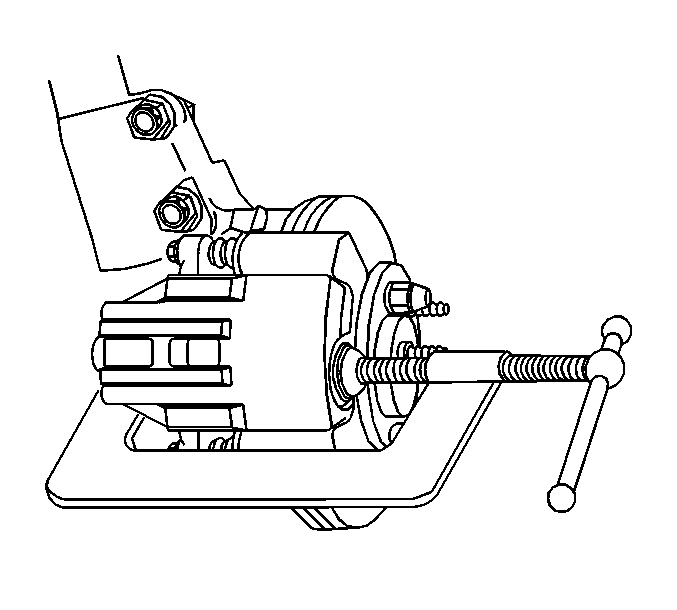
| • | Install a large C-clamp over top of the caliper housing and against back of the outboard pad. |
| • | Slowly tighten C-clamp until piston is pushed into caliper bore far enough to slide caliper off rotor. |
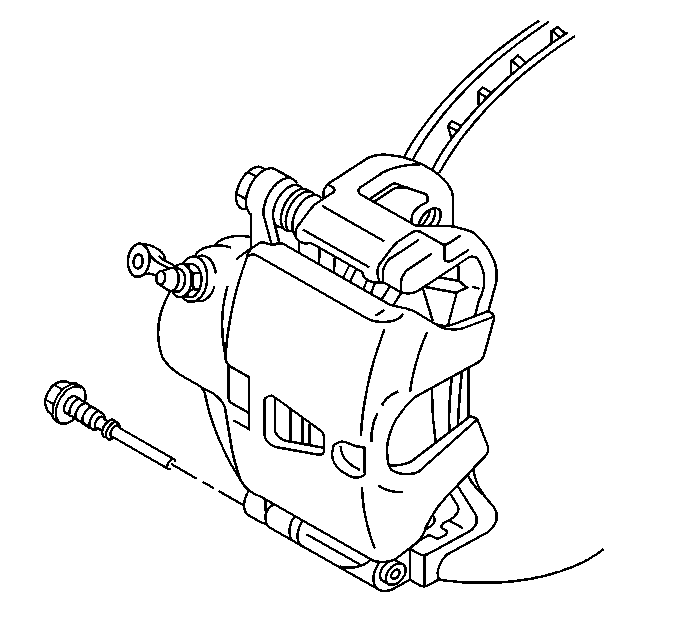
Installation Procedure
- Compress caliper piston completely into the caliper bore.
- Install the caliper over the brake pads into the caliper anchor bracket.
- Install the caliper pin bolts.
- Install the brake hose inlet fitting to the caliper.
- Bleed the brake system. Refer to Hydraulic Brake System Bleeding .
- Install the tire and wheel assembly. Refer to Tire and Wheel Removal and Installation in Tires and Wheels.
- Lower vehicle.
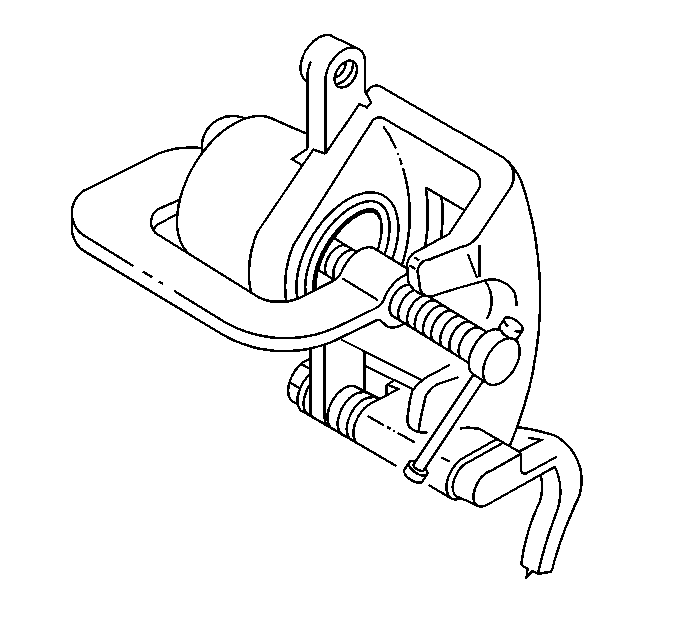
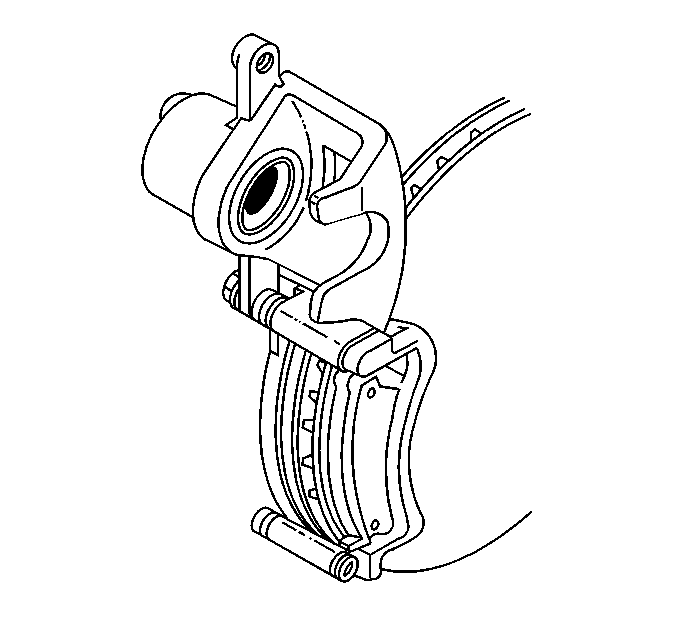

Notice: Use the correct fastener in the correct location. Replacement fasteners must be the correct part number for that application. Fasteners requiring replacement or fasteners requiring the use of thread locking compound or sealant are identified in the service procedure. Do not use paints, lubricants, or corrosion inhibitors on fasteners or fastener joint surfaces unless specified. These coatings affect fastener torque and joint clamping force and may damage the fastener. Use the correct tightening sequence and specifications when installing fasteners in order to avoid damage to parts and systems.
Tighten
Tighten the caliper pin bolts to 85 N·m (63 lb ft).
Tighten
Tighten the brake hose fitting bolt to 45 N·m (33 lb ft).
Brake Caliper Replacement With B9Q/V4U
Removal Procedure
- Remove two-thirds of the brake fluid from the master cylinder.
- Raise the vehicle. Refer to Lifting and Jacking the Vehicle in General Information.
- Remove the tire and the wheel.
- Compress the piston using adjustable pliers over the inboard lining tab and the caliper housing flange.
- Remove the brake hose from the caliper by removing the inlet fitting bolt.
- Remove the mounting bolts (1), (2).
- Remove the bolt boots (1), (2).
- Remove the caliper and swivel clear.
- Remove the bushings.
- Inspect the mounting bolt and the sleeve assemblies for corrosion. Replace any corroded parts. Do not attempt to polish away any corrosion.
- Inspect the bolt boots for any nicks, cuts, or corrosion. Replace any damaged parts.
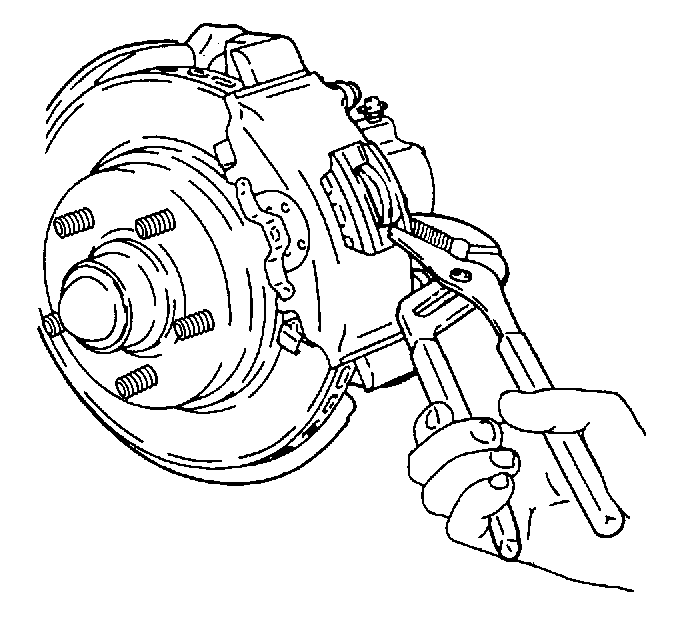
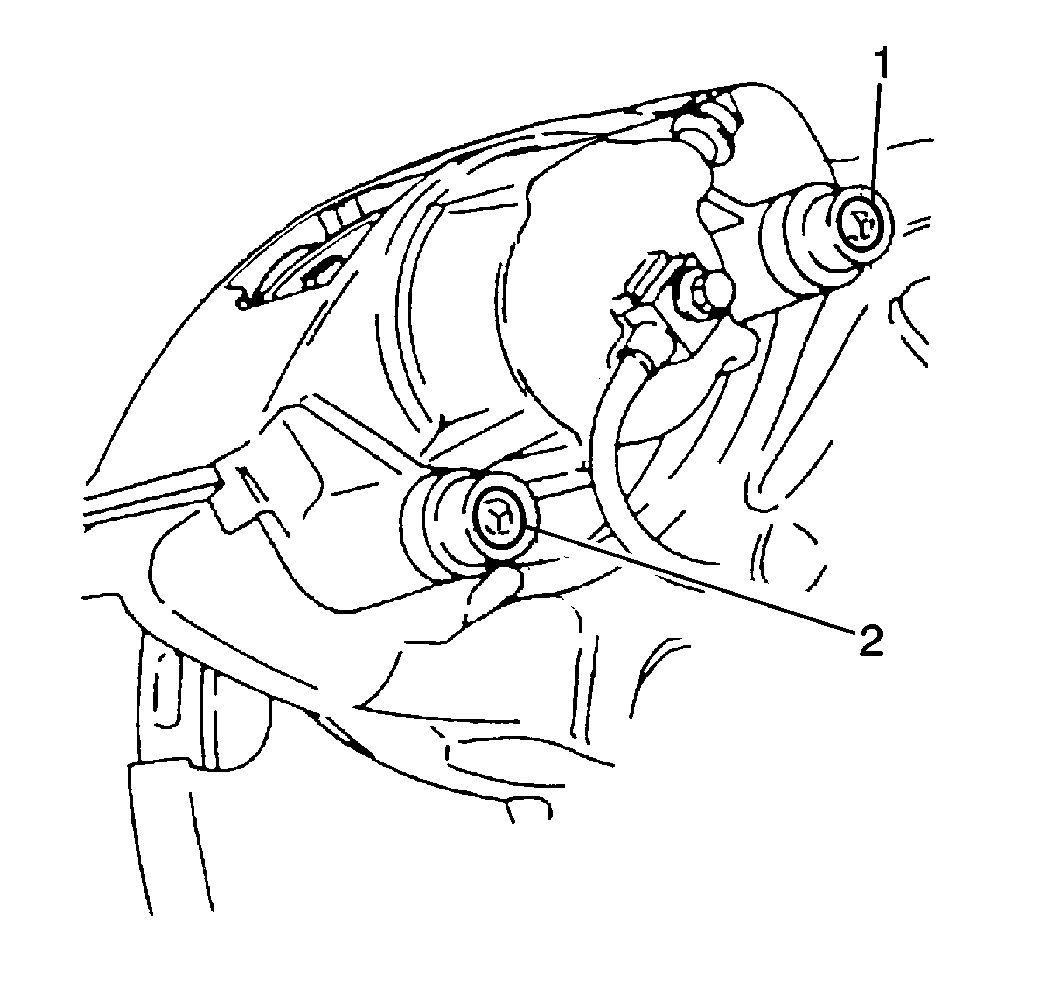
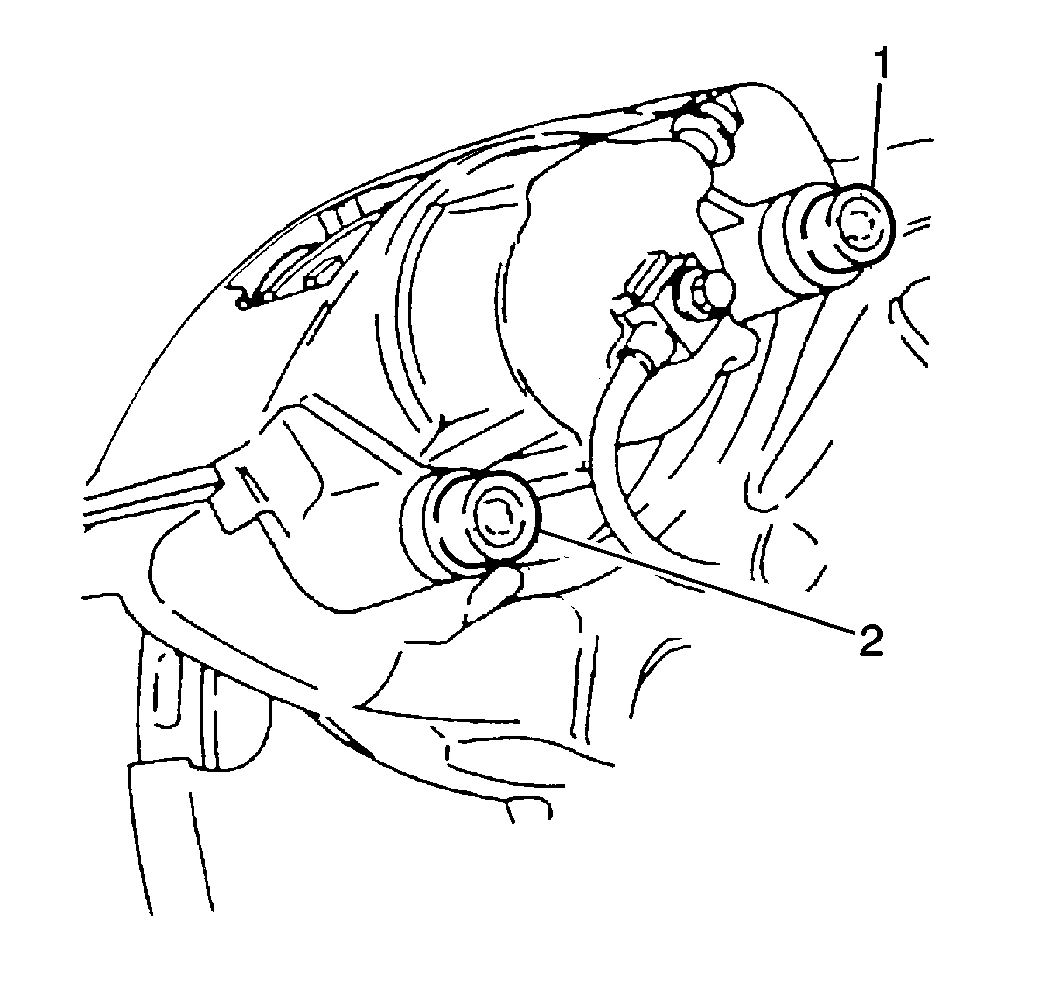
| • | Inspect the inside of the caliper assembly for signs of fluid leakage. Refer to Brake Caliper Overhaul if any leakage is detected. |
| • | Remove the mounting bolt seals if they were used. |
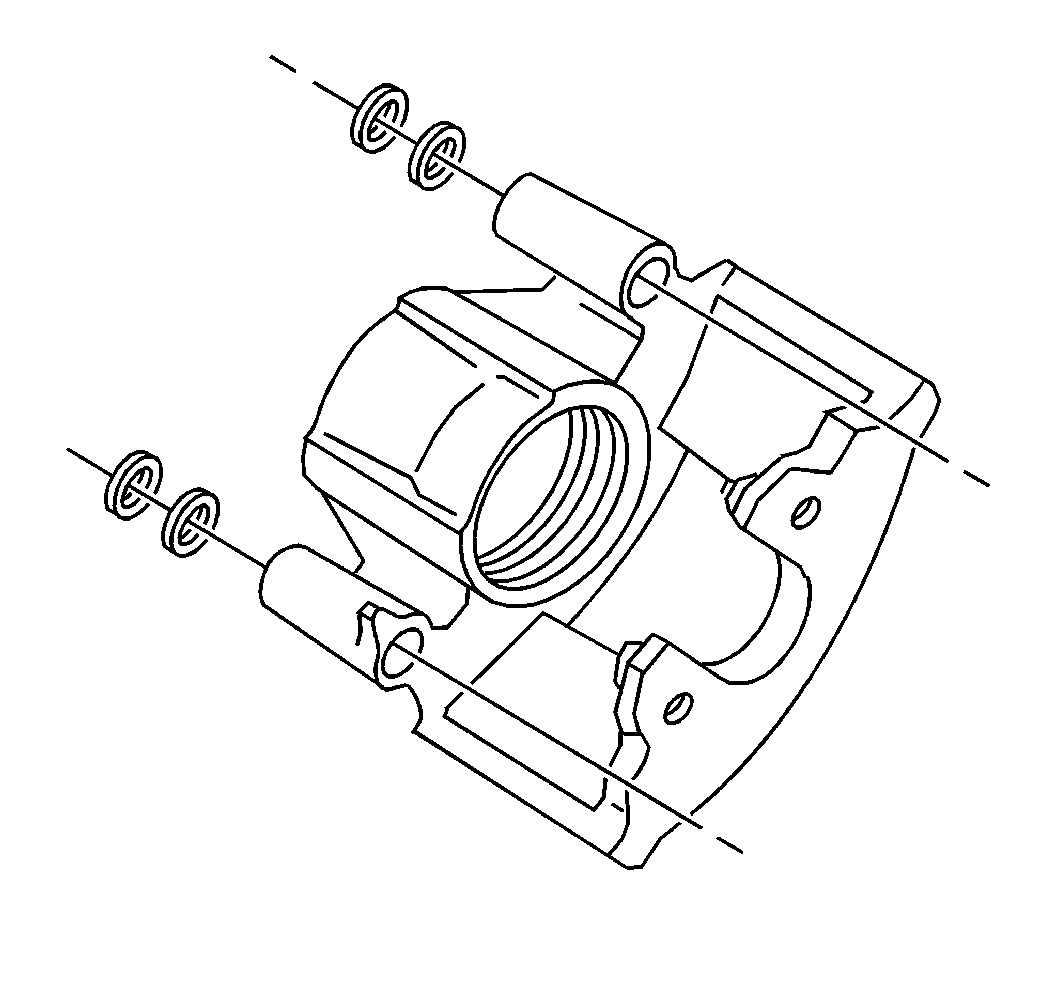
Important: Clean the caliper assembly and install a new brake caliper hardware kit. Replace the brake caliper hardware kit with every brake pad replacement.
Installation Procedure
- Install the new bushings and the bolt seals.
- Lubricate the bushings and the mounting bolt seals with GM P/N 18010909 or the equivalent.
- Install the new bolt boots (1), (2).
- Position the brake caliper body.
- Check the brake pad clips.
- Install the brake caliper body.
- Install the brake hose.
- Bleed the brake system.
- Install the wheel.
- Fill both housing cavities between the bushings with GM P/N 18010909 or the equivalent.
- Install the mounting bolt and the sleeve assemblies.
- Connect the brake hose to the caliper.
- Measure the clearance between the caliper and the bracket stops.
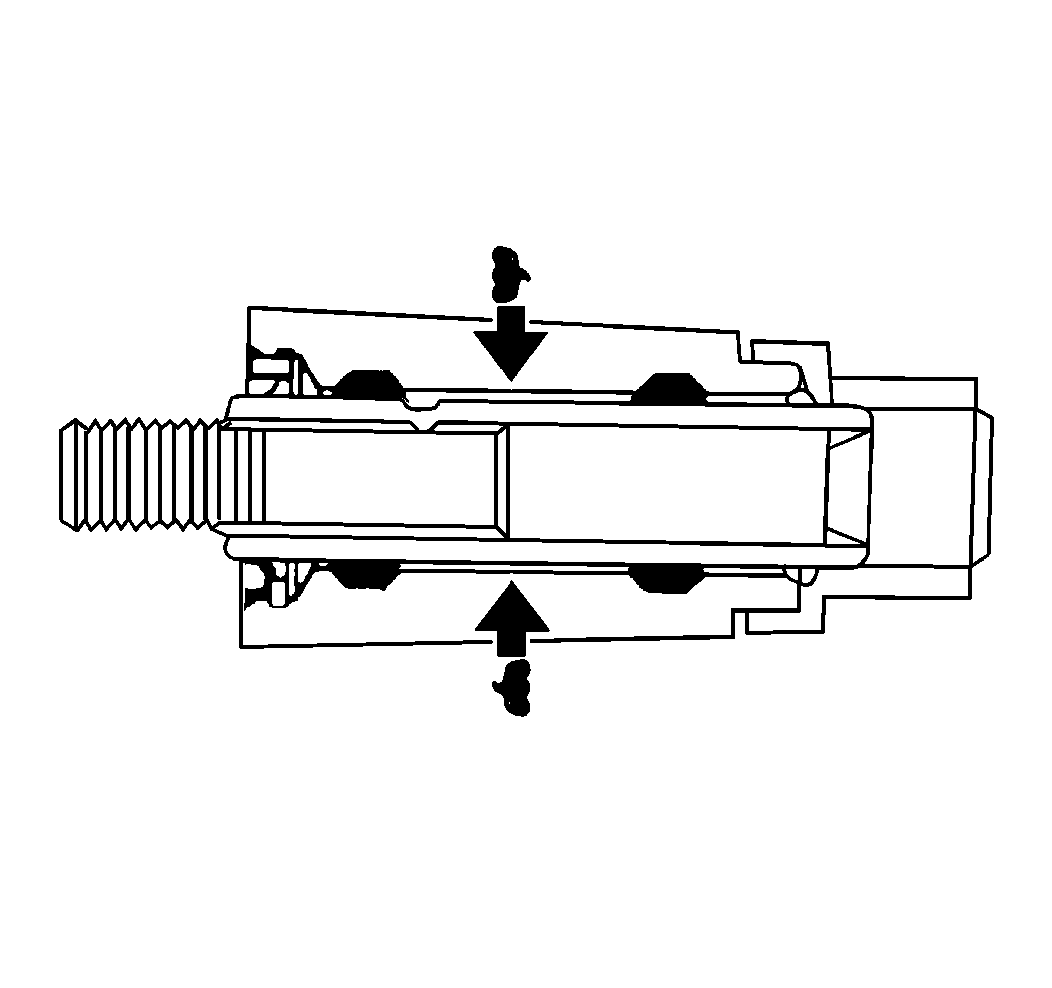


Notice: Use the correct fastener in the correct location. Replacement fasteners must be the correct part number for that application. Fasteners requiring replacement or fasteners requiring the use of thread locking compound or sealant are identified in the service procedure. Do not use paints, lubricants, or corrosion inhibitors on fasteners or fastener joint surfaces unless specified. These coatings affect fastener torque and joint clamping force and may damage the fastener. Use the correct tightening sequence and specifications when installing fasteners in order to avoid damage to parts and systems.
Tighten
Tighten the bolt to 51 N·m (38 lb ft). The
bolts boots must remain secure after tightening the bolts.
Tighten
Tighten the brake hose bolt to 45 N·m (33 lb ft).

| • | If necessary, remove the caliper and file the ends of the bracket to obtain a 0.26 to 0.60 mm (0.010 to 0.024 in) total clearance. |
| • | Measure the clearances individually and then add them together. |
| • | Install the tire and the wheel. |
| Important: Pump the brake pedal until it is firm before moving the vehicle. Check the fluid level in the master cylinder after pumping the brakes. |
